Coming to this game, Liverpool were on the quest for breaking the Premier League record for most points in a single season. They needed to win all three remaining games to achieve the historic feat. For a team that only needed a record-breaking 31 games to win the league, that wouldn’t be a mammoth task, right? Even more, they only faced Arsenal: a team on a roller-coaster-like performance.
Liverpool’s dream started well when Sadio Mané scored within 20 minutes. However, the Reds seemed to show some sense of complacency in the latter part of the first half. Both Alisson Becker and Virgil van Dijk made amateurish errors that gave Arsenal all of their goals. How did both managers react? This tactical analysis will dig deep on both team’s tactics throughout the game.
Lineups
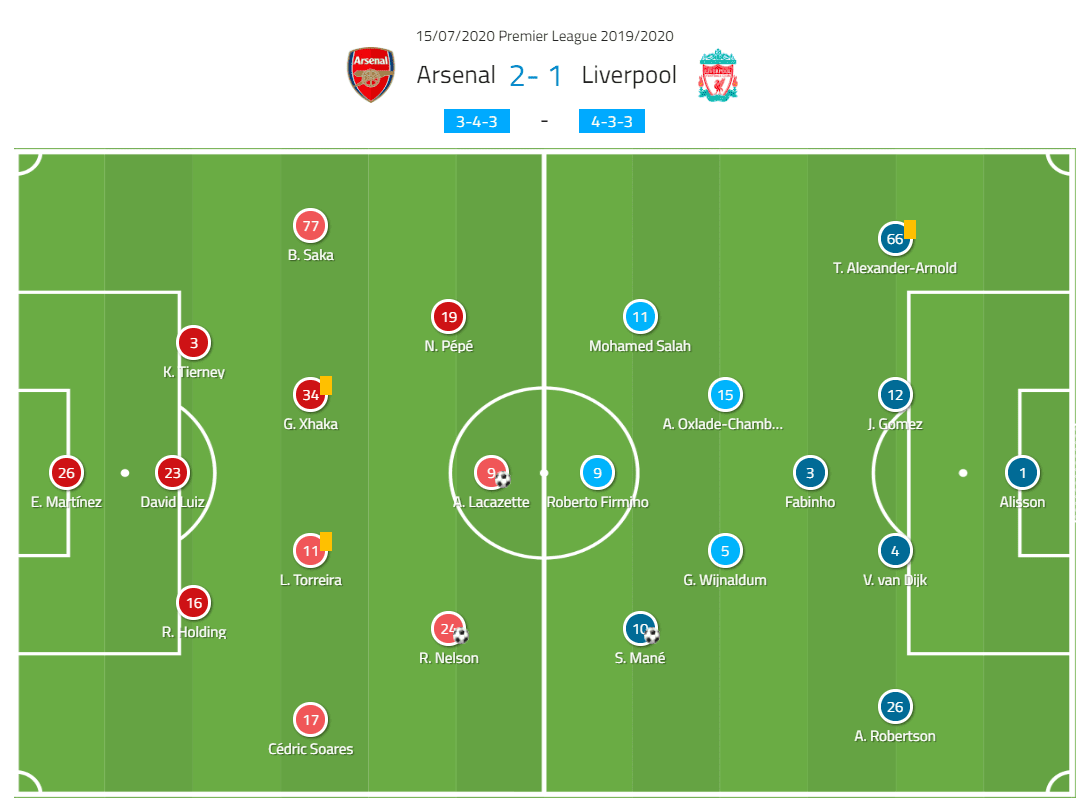
Mikel Arteta once again chose 3–4–3 for his team. The trio of Rob Holding, David Luiz, and Kieran Tierney was chosen to protect Emiliano Martinez in between the sticks. Up top, Alexandre Lacazette led the attacking line. The Frenchman was flanked by Reiss Nelson and Nicolas Pépé to provide the attacks for Arsenal. The Gunners’ bench was filled with players like Dani Ceballos, Ainsley Maitland-Niles, Joe Willock, Sead Kolašinac, and talisman Pierre-Emerick Aubameyang.
Moving to the opposite side, Jürgen Klopp deployed a regular 4–3–3 for his team. In this game, the Reds’ engine room was filled with Fabinho, Alex Oxlade-Chamberlain, and Georginio Wijnaldum. The attacking trident of Mohamed Salah, Roberto Firmino, and Mané once again started for the visitors. Names like Naby Keïta, Takumi Minamino, Xherdan Shaqiri, and Divock Origi had to start the game from the dugout.
Early exchange
Similar to their previous games, Arsenal deployed a makeshift back-four when building their attacks. This means Tierney — left centre-back — would drift wide to be the temporary left-back, while Bukayo Saka — left wing-back — steps up in parallel with the attacking line. The objective behind this was to give Arsenal a numerical overload against Liverpool’s front three in their first line of build-up.
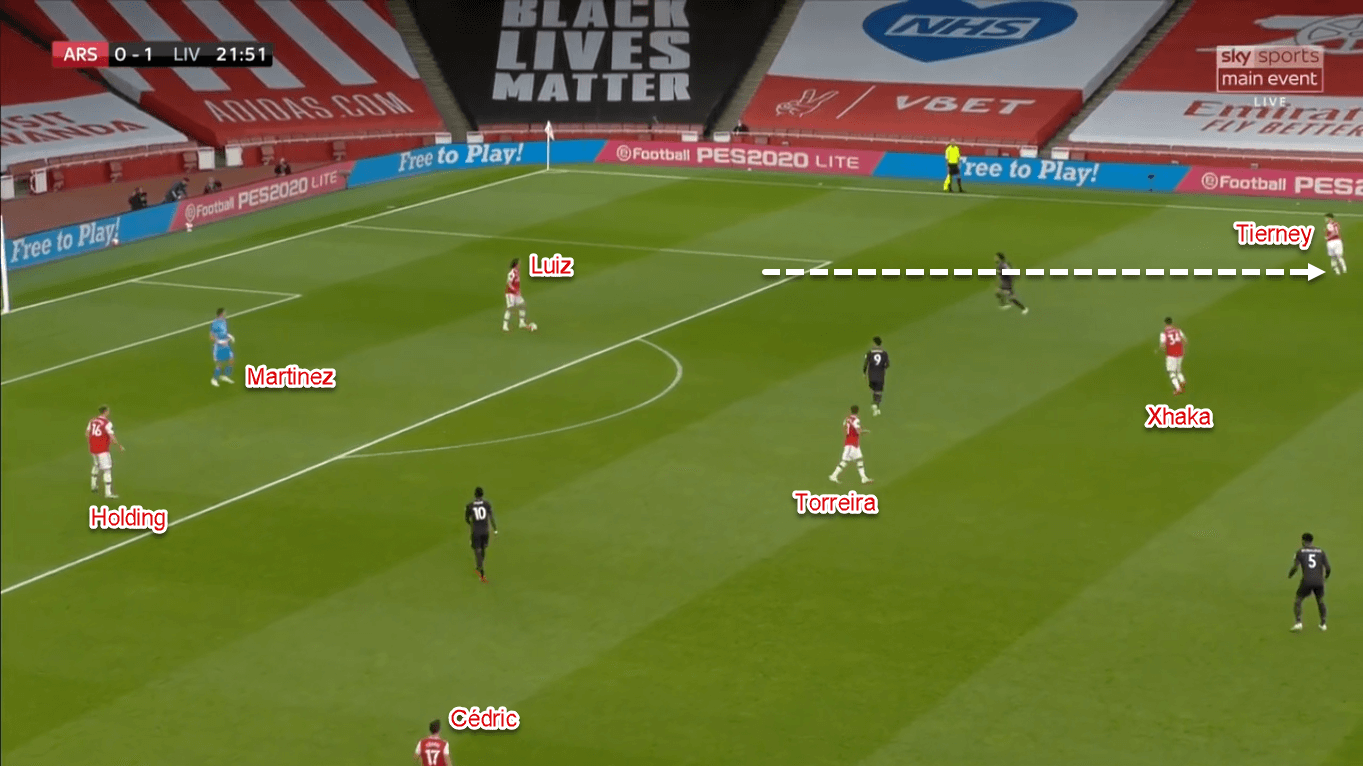
In the opposite side, Liverpool used their usual high-pressing 4–3–3 since the beginning. Indeed the Reds would only have three players against Arsenal’s four in their first line of pressing. However, they had three midfielders versus the Gunners’ double-pivot in the next line. It means the visitors would match Arsenal’s numbers in their build-up plays, thus limiting their threat early on.
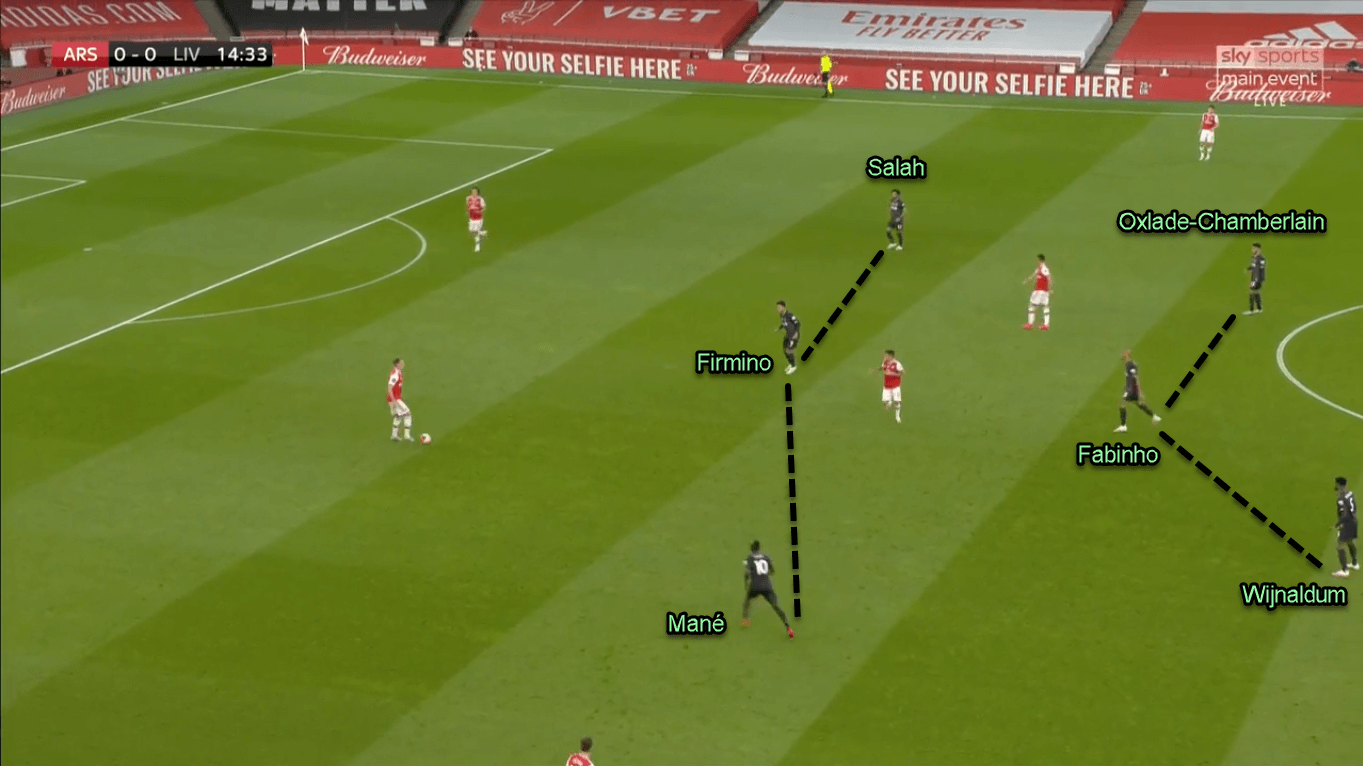
Specifically, Liverpool had two particular pressing schemes to prevent Arsenal from building their plays smoothly from the back. The next part of the analysis will explain more about the Reds’ defensive tactics.
Liverpool’s various pressing scheme (part one)
In this scheme, Salah would step up to aggressively press Luiz when he had the ball. In the process, Salah would try to curve his run inside and force Luiz to be more central. It means that he would leave Tierney free while pressing the centre-back.

With Tierney being free, Luiz would try to access him. However, he couldn’t do that directly as Tierney was too far and Salah blocked the passing lane with his cover-shadow. What Luiz did was to make a square pass to Granit Xhaka, then let the midfielder to play the ball wide to Tierney.
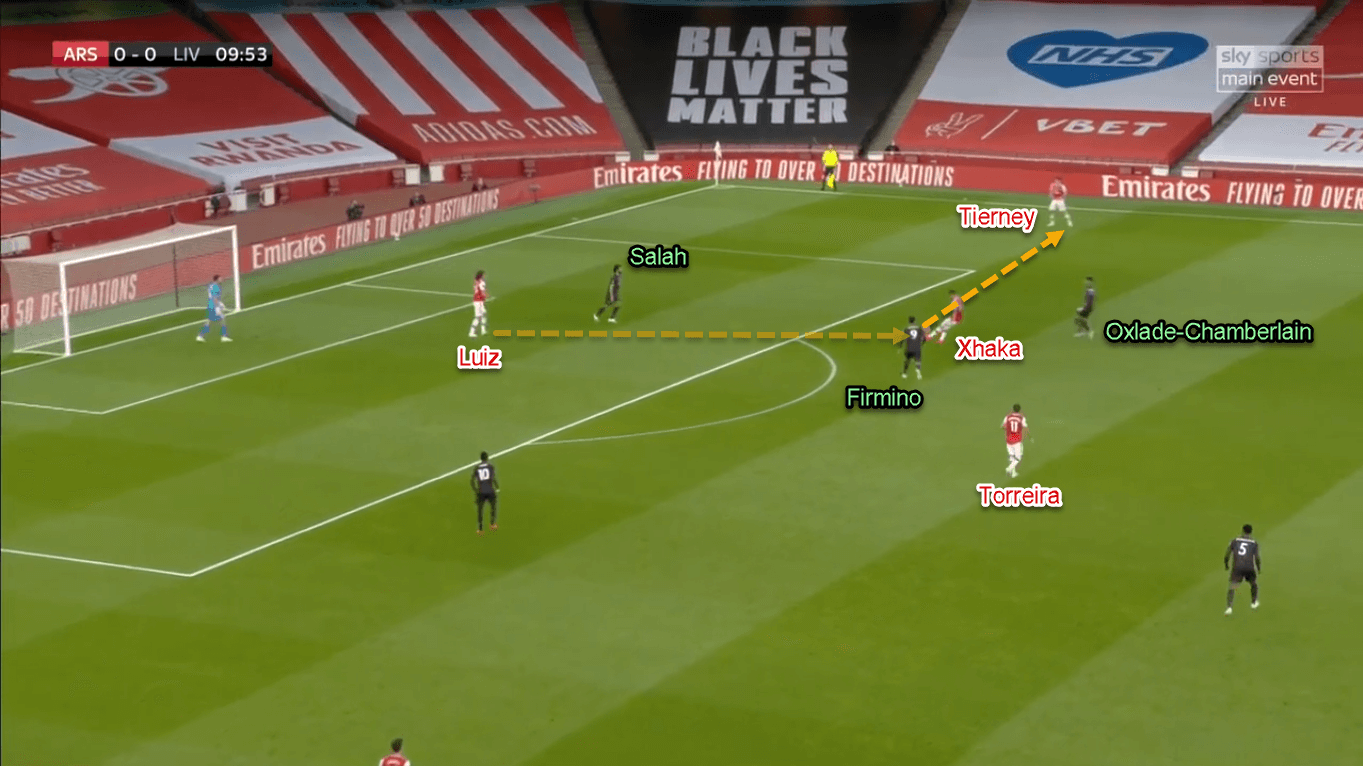
A simple way to escape the press, right? Actually no. When Xhaka tried to find Tierney, Oxlade-Chamberlain would step up aggressively and press the Scotsman. In front of Tierney, Saka would try to drop and offer a nearby passing option. Liverpool reacted to this by instructing Trent Alexander-Arnold to close Saka down immediately. The result was as planned: Tierney got trapped in the wide area and need to escape only with a long pass. Good for Liverpool, the statistics show that Tierney only completed four (30.77%) progressive passes throughout the game.
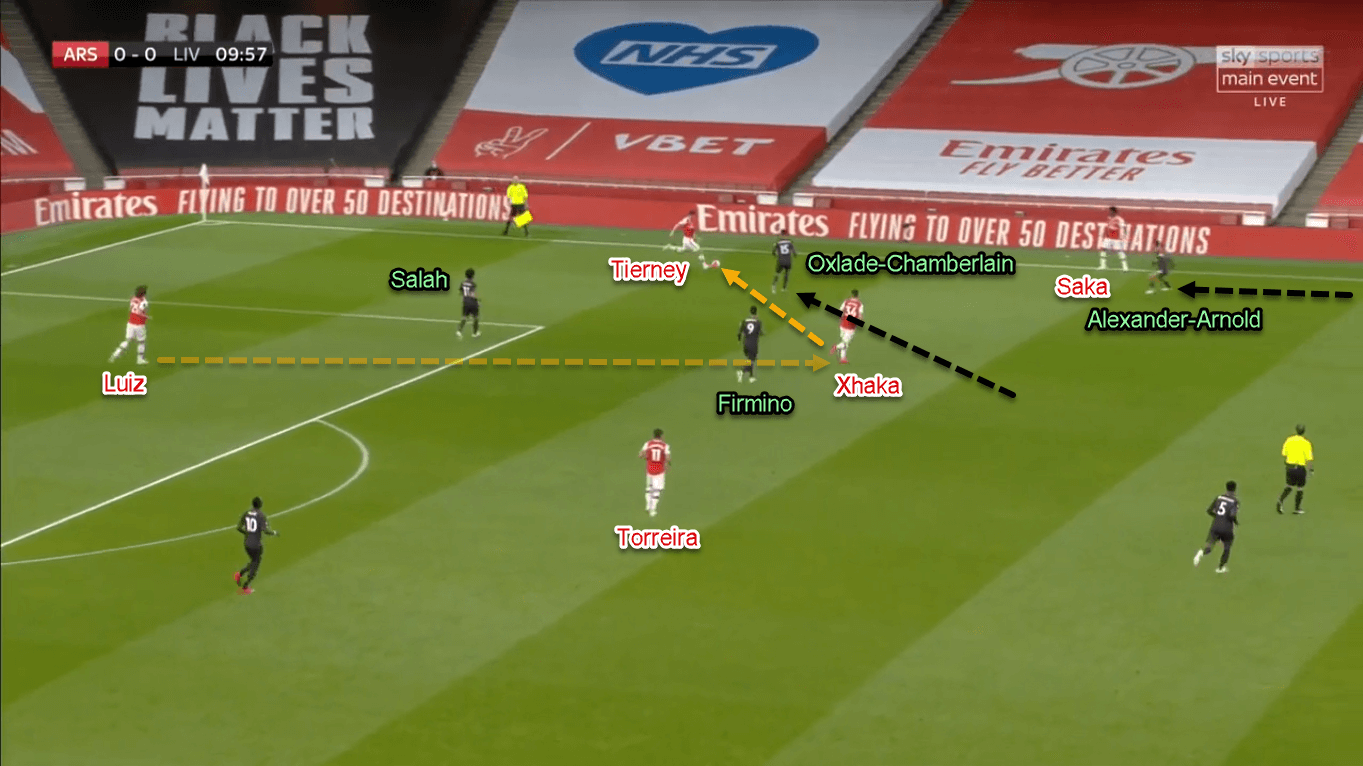
Alternatively, this pressing scheme could finish earlier. It means that Luiz wouldn’t be able to find Xhaka, let alone play the ball to Tierney. In the process, Salah’s hard-press would limit the Brazilian’s time and space with the ball. As a result, Luiz was forced to deploy ineffective long balls.
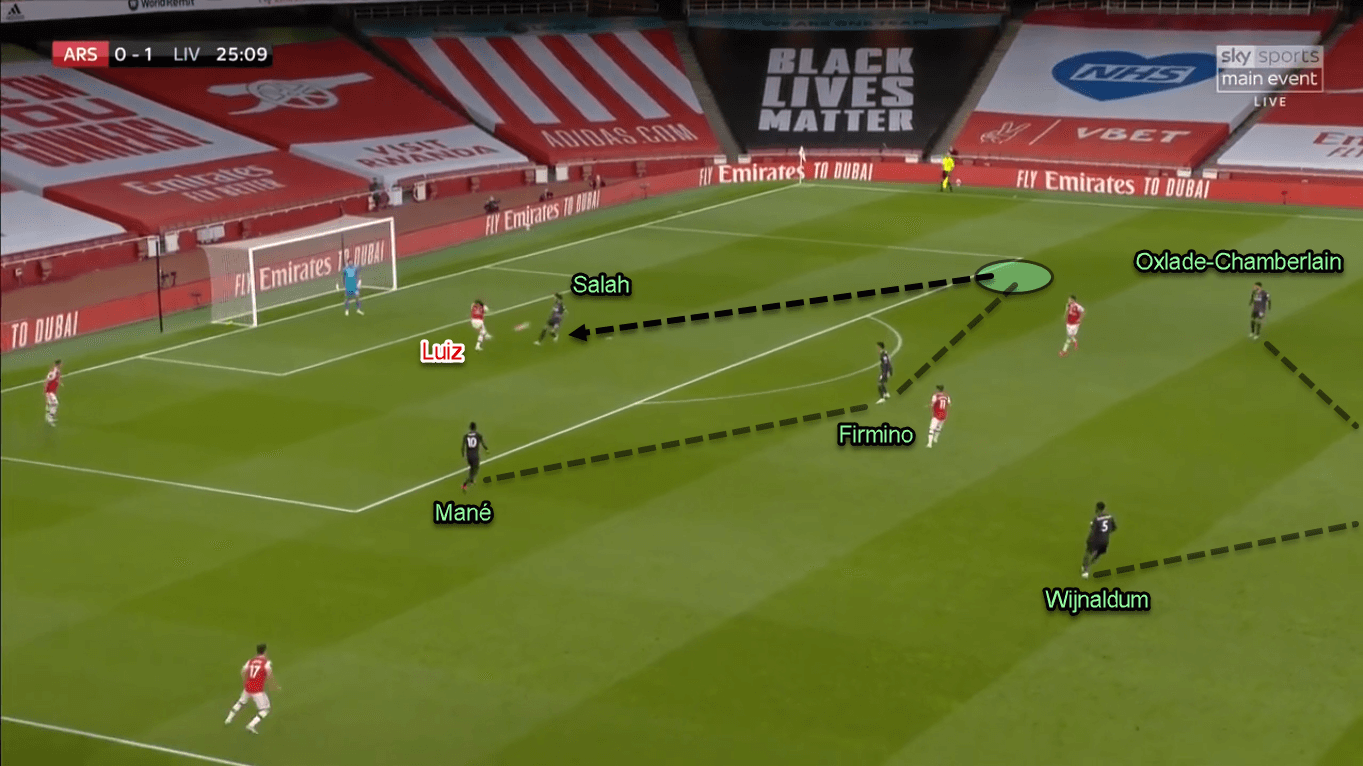
Liverpool’s various pressing scheme (part two)
The second pressing scheme was more simple. This time it happened mostly on the left flank. Different to Salah, Mané wasn’t tasked to press the defender in front of him with much aggression. Instead, the Senegalese would let Holding to have the ball and then build Arsenal’s attack through their right-flank.
Once again, the current Champions League titleholder had a particular pressing scheme. This scheme included Wijnaldum to execute the press. The target was Arsenal’s right (wing) back, Cédric Soares. Whenever the Portuguese received the ball, Wijnaldum would leave the midfield line and press him immediately.
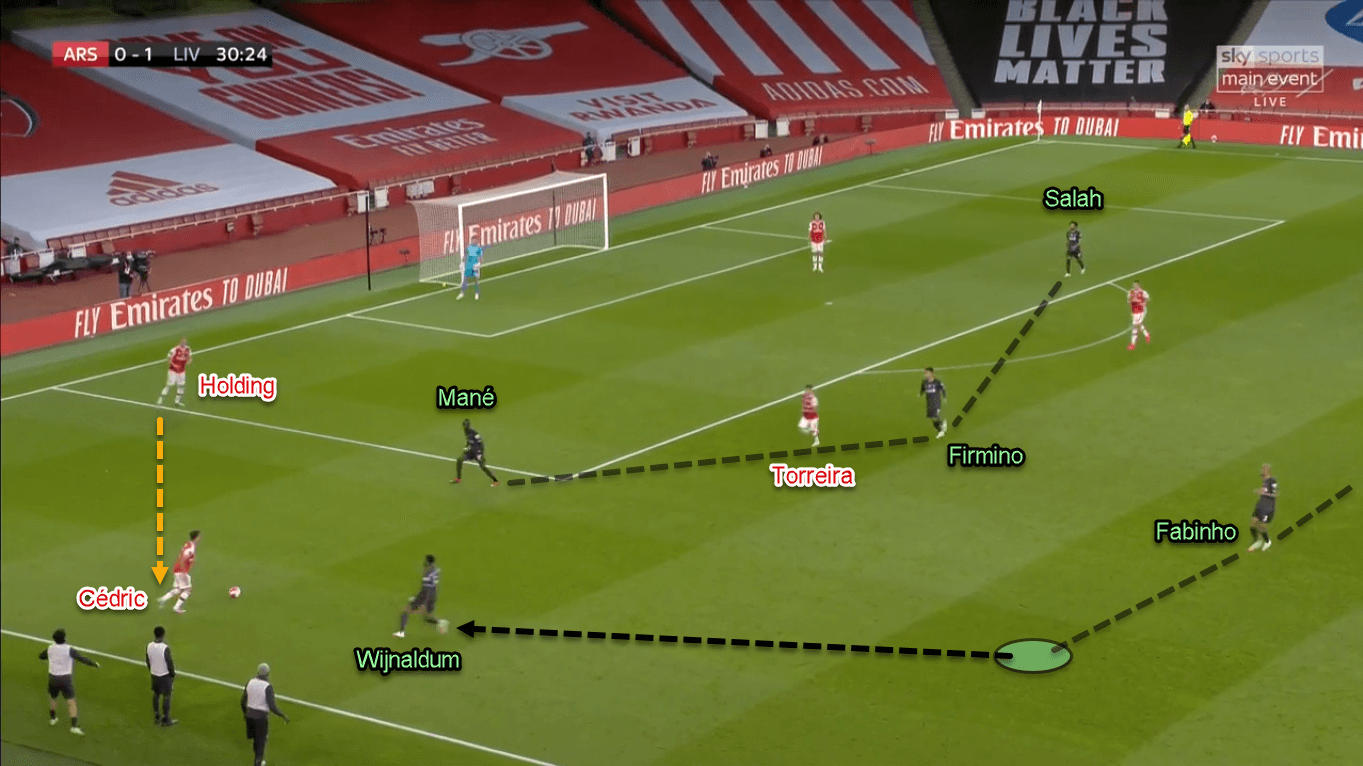
Liverpool didn’t need to worry. They would still have Fabinho and Oxlade-Chamberlain against Torreira and Xhaka in the midfield line. Beside them, Mané’s less-aggressive positioning would also prevent Cédric to play the ball centrally. As a result, no nearby passing options available for the Portuguese. The stats even show that Cédric finished the game with zero forward passes, zero long passes, and … yep, zero progressive passes completed. 0% accuracy from a combined eight attempts.
Arsenal then moved to a more direct approach after knowing they didn’t stand a chance against Liverpool’s high-pressing game. This means goalkeeper Martinez was tasked to play directly, either from goal-kicks or when he has a live ball to play. Unfortunately, his distribution quality wasn’t the best. He only completed three (20%) of his long passes in this game. One of the inaccurate long balls even ended with Mané’s goal just three minutes before the first water break.
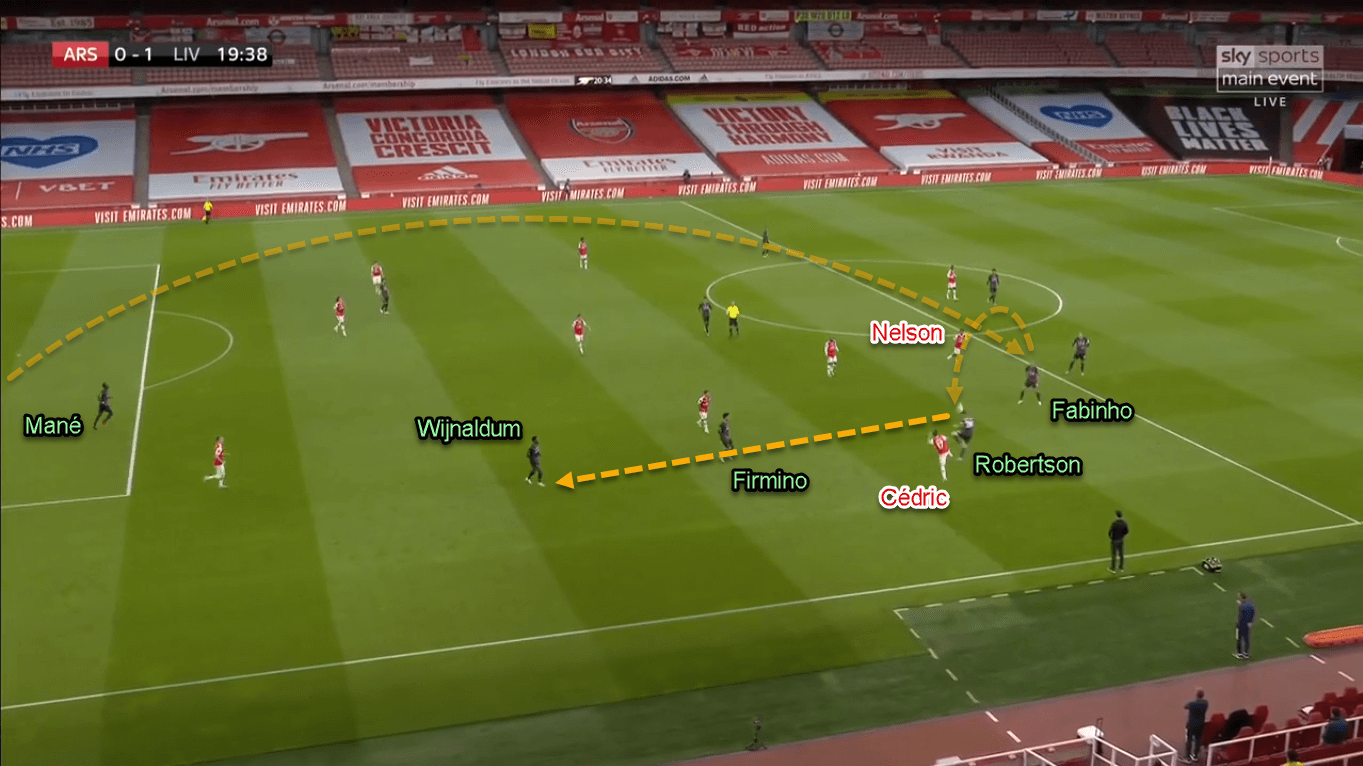
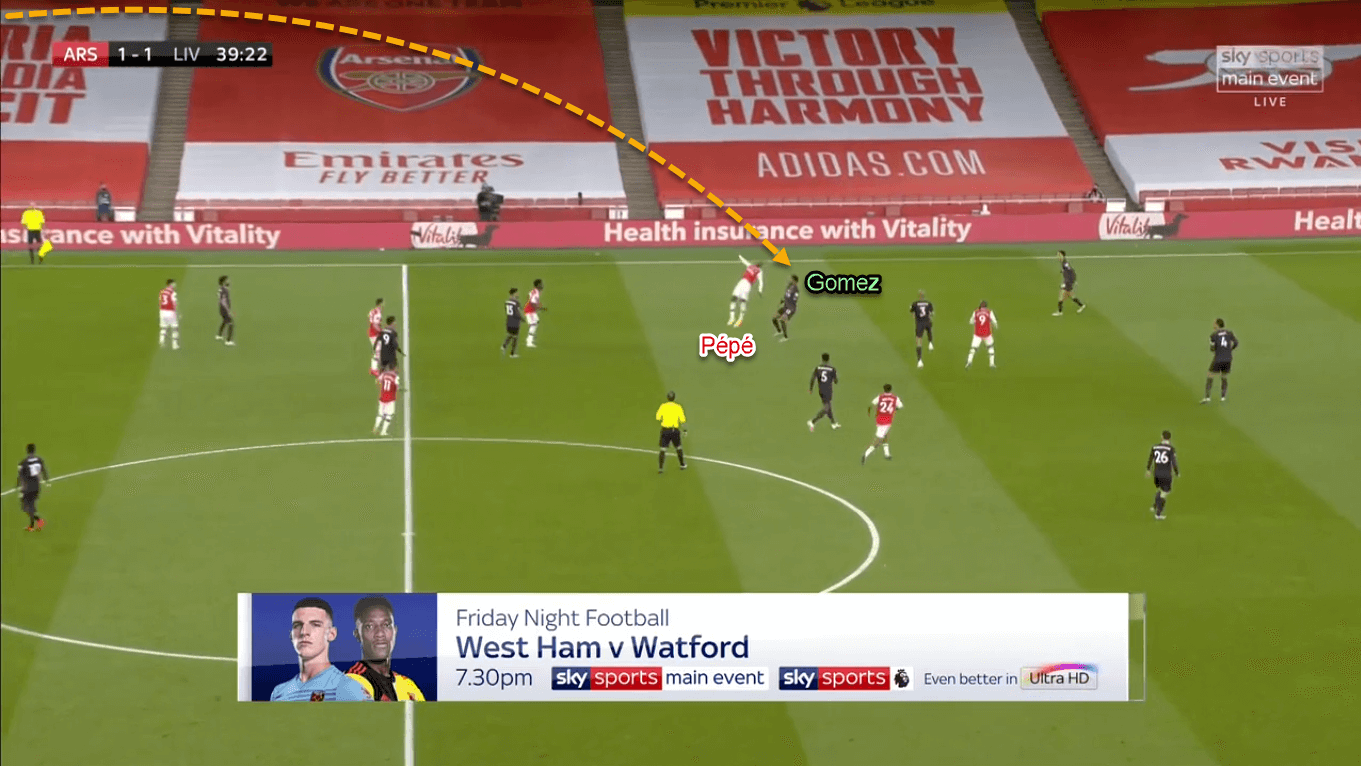
The home side also displayed a high-pressing game
Arsenal used the 5–2–3 shape when pressing Liverpool high. Their aim was to focus on the central area, thus forcing the Reds to build from the flank. One important feature in Arsenal’s pressing was Lacazette’s role. As a centre-forward, he usually would drop a little bit instead of being the most aggressive player. The reason behind that was he’s tasked to close Fabinho down and prevent him from receiving the ball.
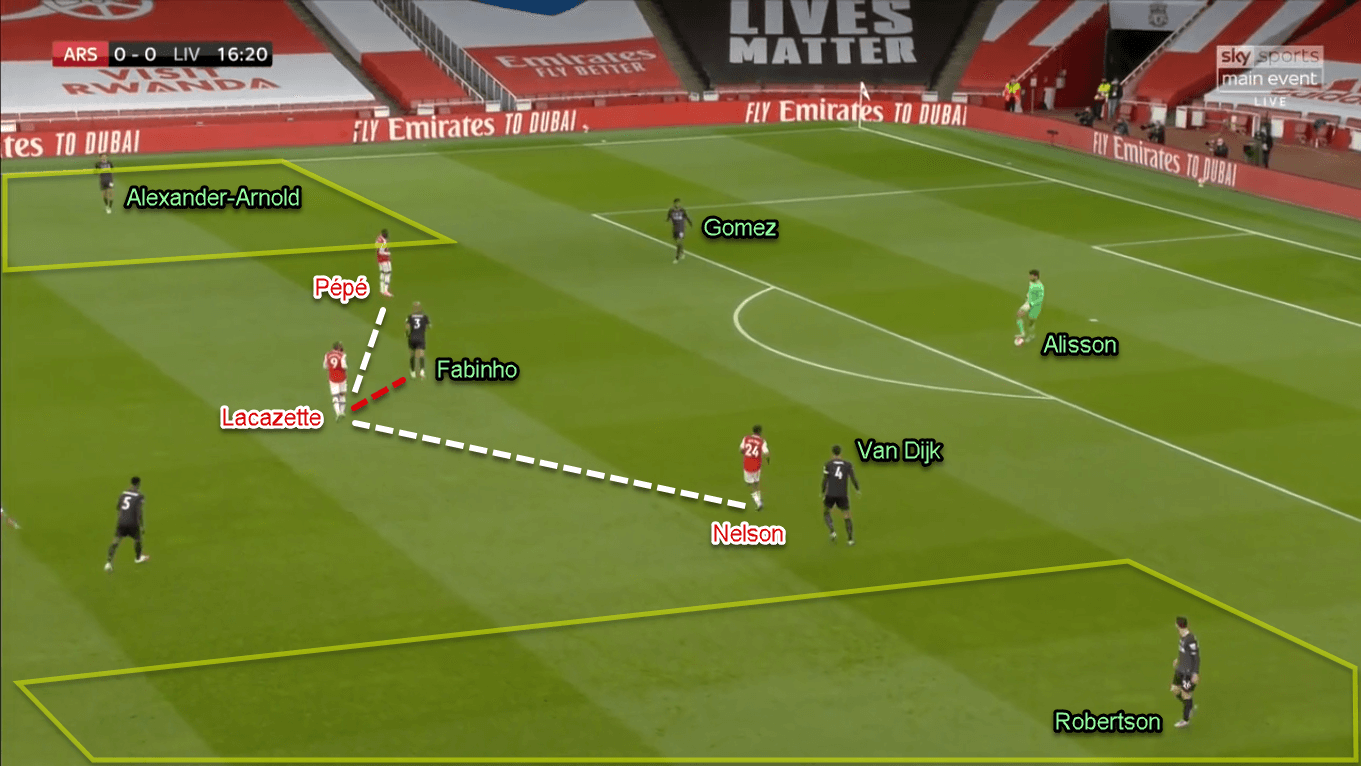
With no Lacazette around them, Liverpool’s centre-backs indeed had more space and time with the ball in their early build-up phase. However, it wouldn’t last long. The nearby Arsenal winger would try to press the on-ball centre-back whenever he had the possession. The scheme was a bit similar to Salah: either Pépé or Nelson would leave Liverpool’s full-backs to press on Joe Gomez or Van Dijk. For a fact, Lacazette’s goal came from this scheme.
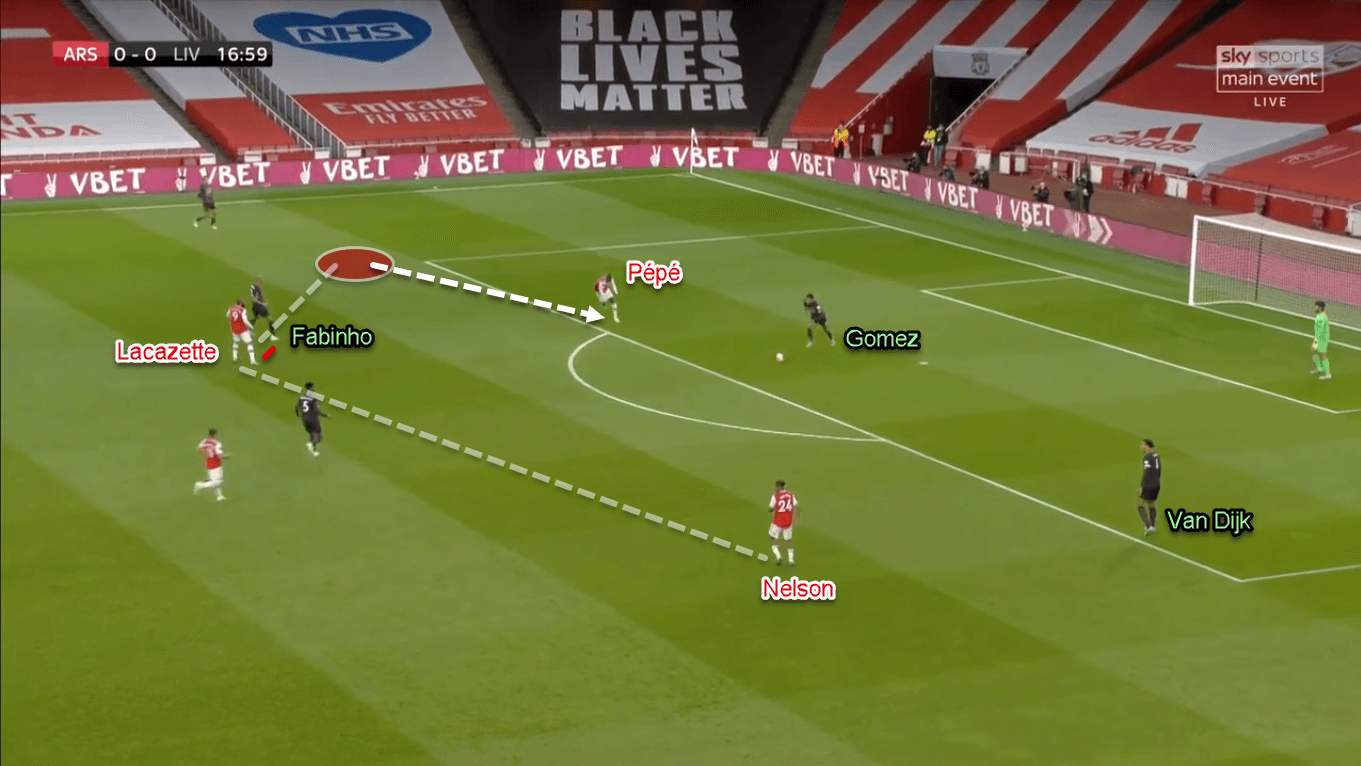
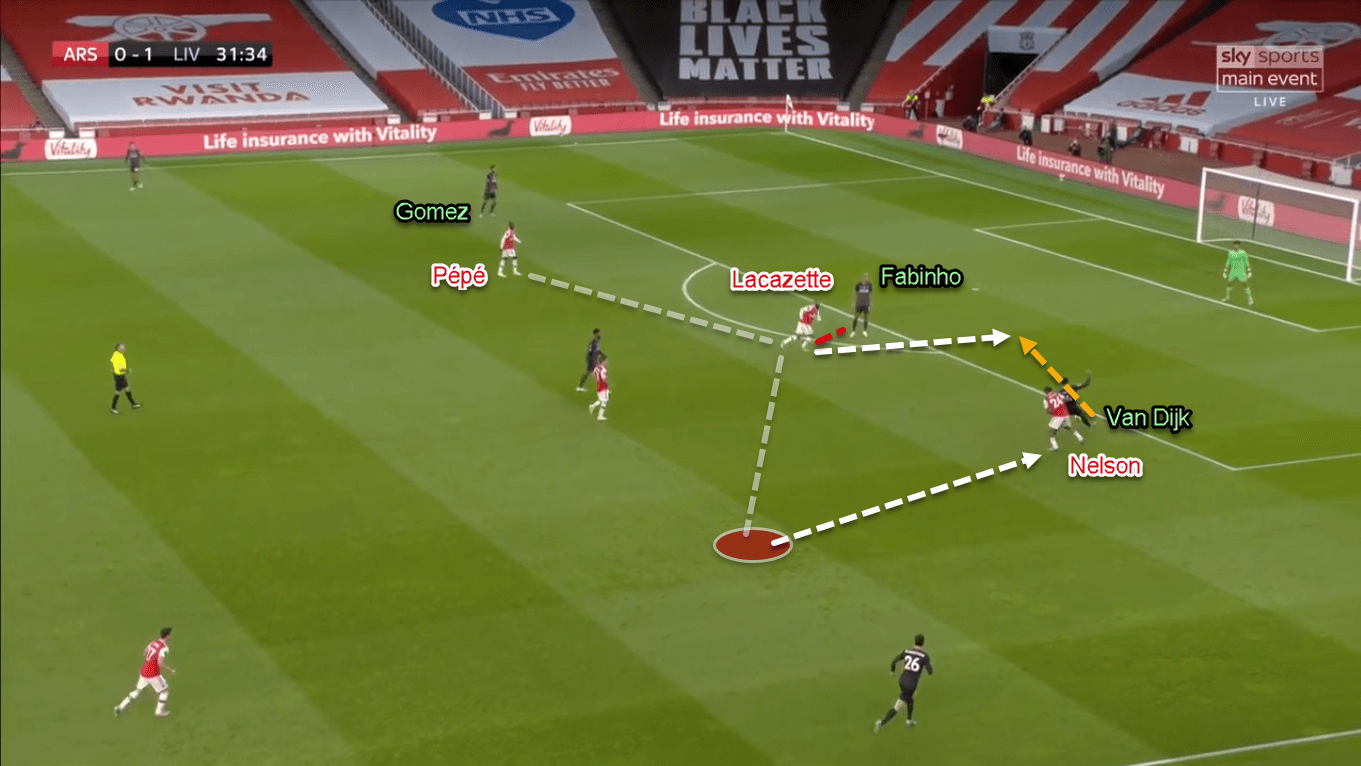
As mentioned previously, both Alexander-Arnold and Andrew Robertson would be left free in Arsenal’s central-focused press. Liverpool had two ways to access them. First of all, by diagonal balls from goalkeeper Alisson. Secondly, Klopp would instruct one of the midfielders to drop next to Fabinho, thus offering an additional vertical option for the deeper players. This extra player then was tasked to immediately send the ball wide to access one of the full-backs.
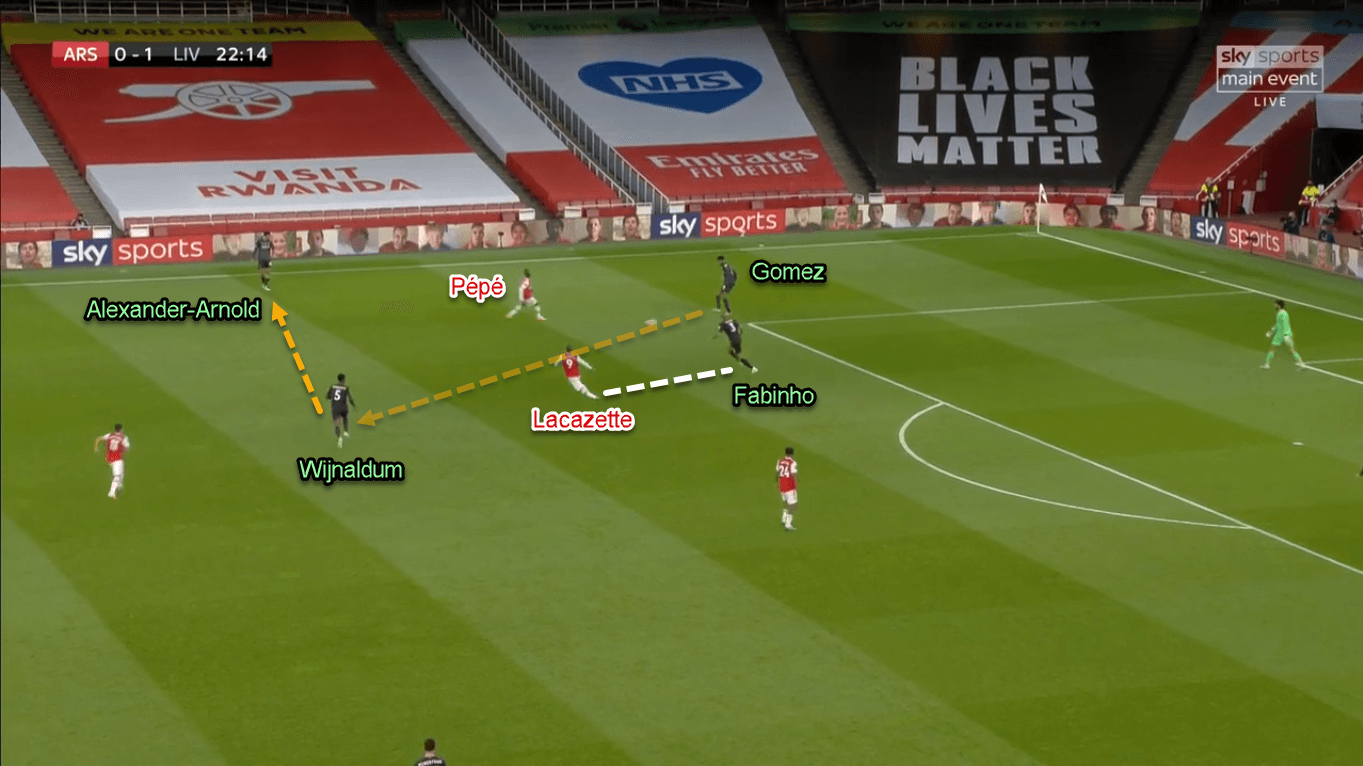
Arsenal had an issue, but …
Arteta asked his players to defend in a man-oriented way against Liverpool’s midfield trio. It means that both Torreira, Xhaka, and later, Ceballos, would focus to follow the nearest Liverpool midfielder to them rather than defending zonally. With only two midfielders to do the task, for many times Liverpool could exploit this particular tactic from Arsenal.
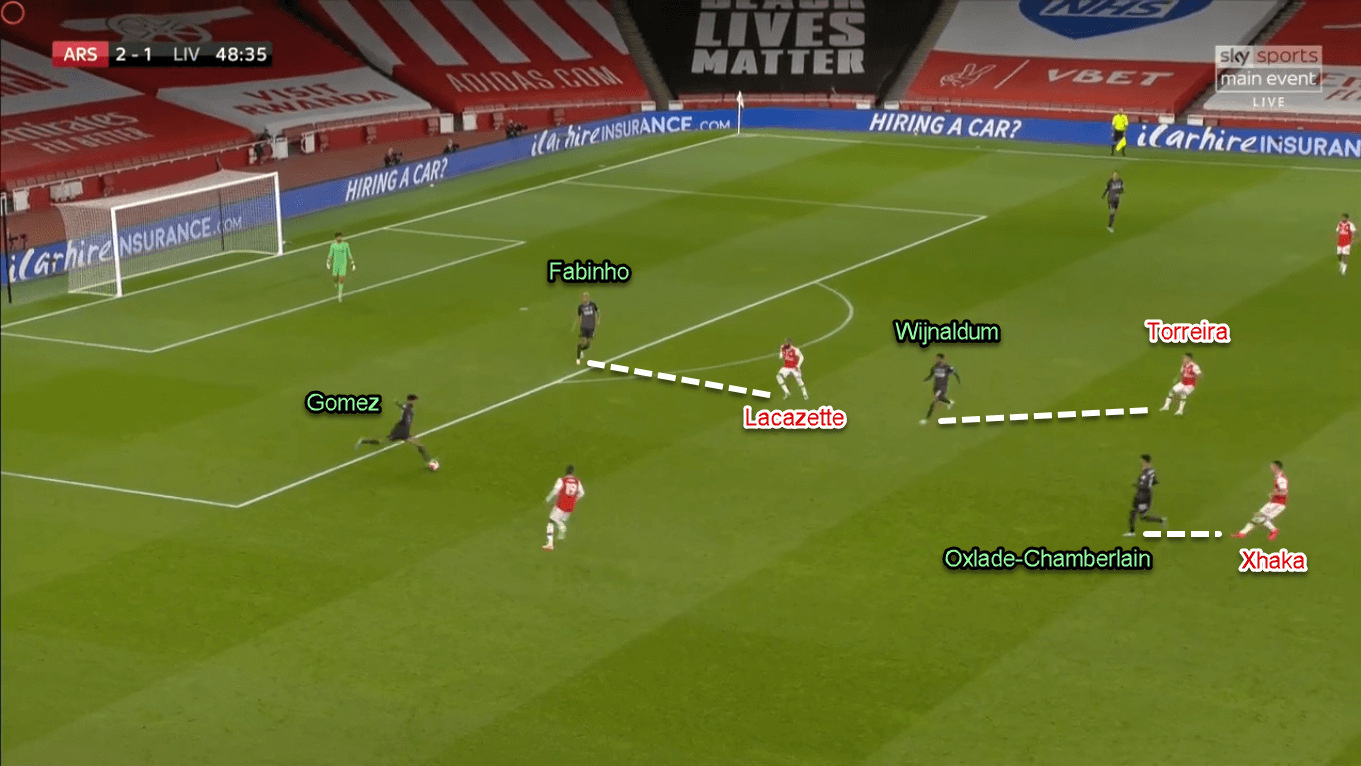
Firstly, the visitors would allow Firmino to drop from his position. With Xhaka, Torreira, and Lacazette engaged to all Liverpool’s midfielders, Firmino would have ample space to be accessed. Specifically, the deeper players could find him with a vertical pass to exploit this defensive approach.
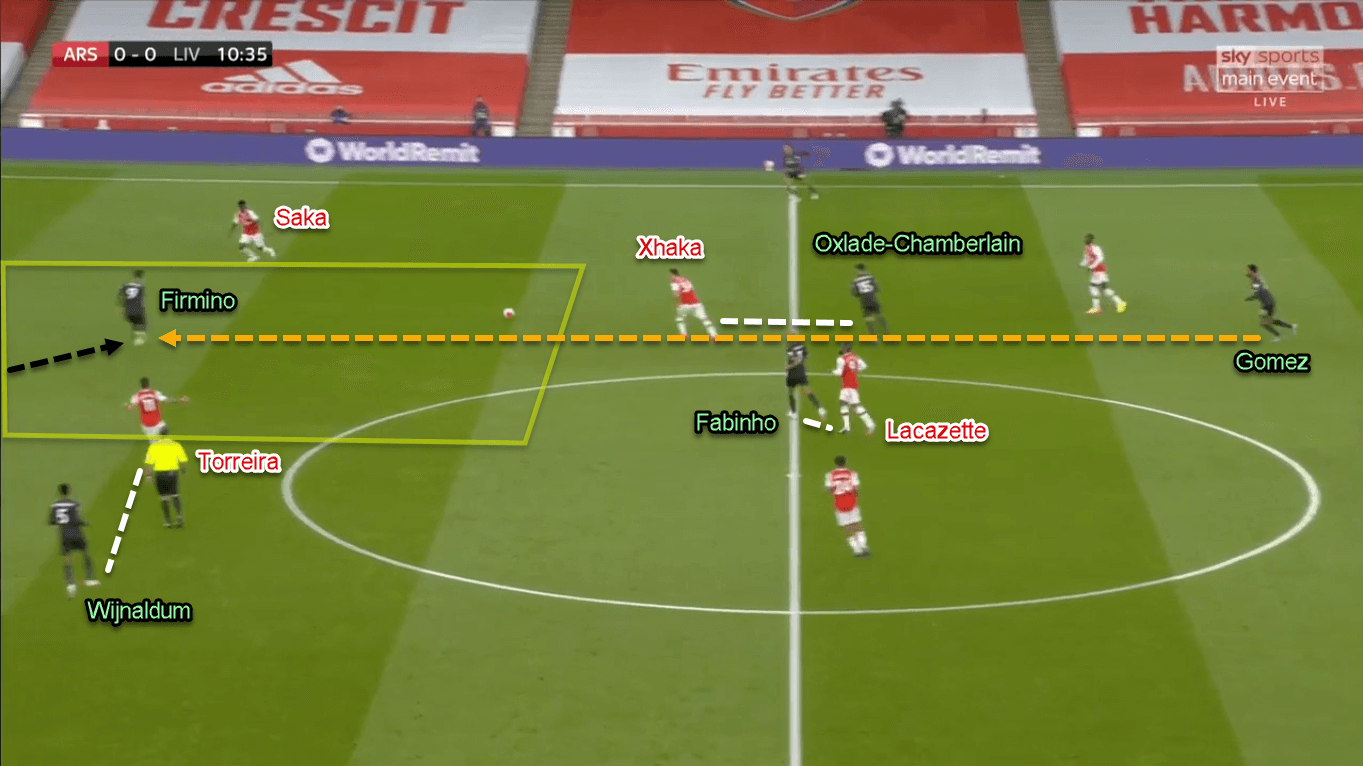
Secondly, Klopp would allow his players to rotate rather freely. Sometimes even combined with Firmino’s dropping movements. It means that Wijnaldum and/or Oxlade-Chamberlain could be found playing wide while (one of) the attackers move inside.
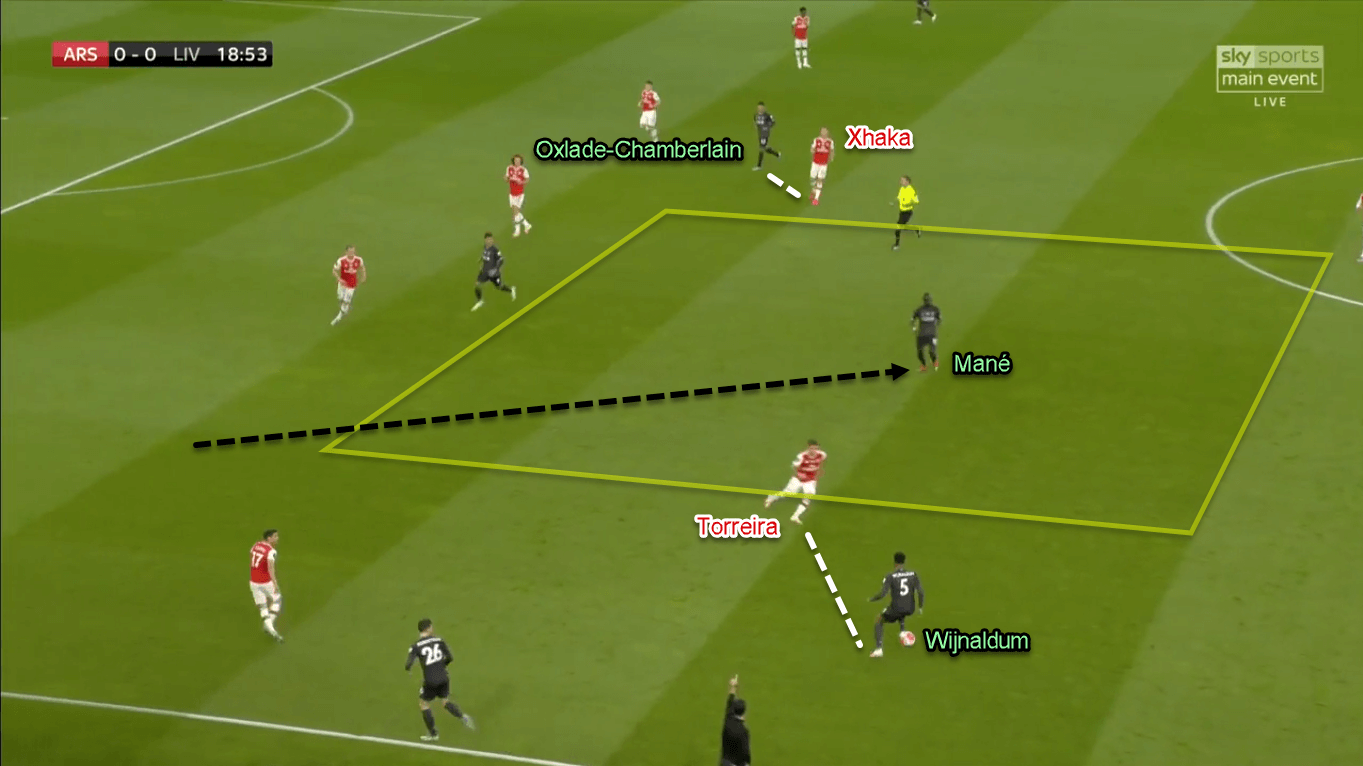
Somehow, Liverpool couldn’t exploit the issue maximally. Sometimes the free player in space was not played, while on other occasions the receiver’s bad control or body orientation let his team down. Their flank-heavy approach could also be blamed in this. That’s because even when they were allowed much space centrally, Liverpool would incline to send the final ball with their signature crosses.
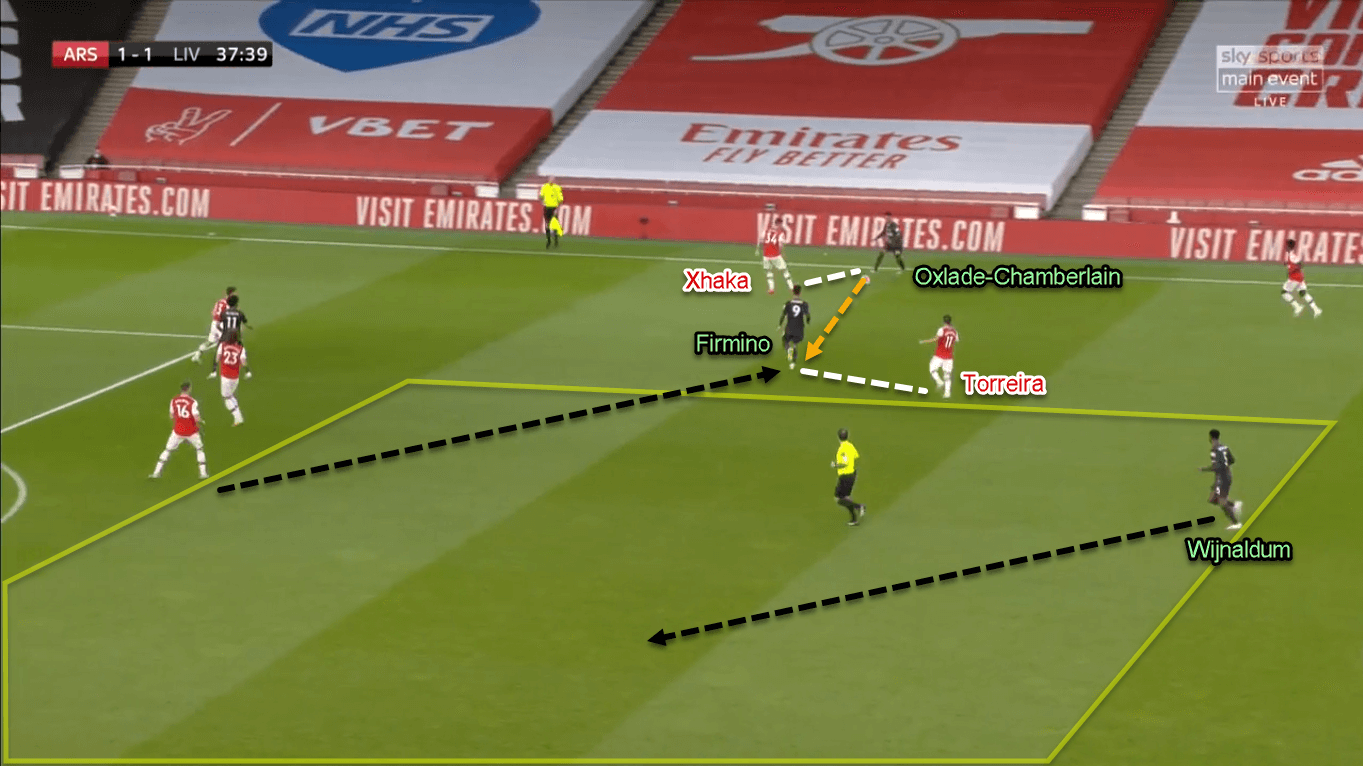
Second-half adjustments
Arsenal dumped the aggressive pressing to play more safely in the second half. The stats even show that they never had more than 22% of possession after the half-time break. In the process, they used a deeper 5–2–3, which at times could even move to 6–2–2. With up to six players in their backline, Arsenal were ready to combat Liverpool’s crossing-heavy tactic.
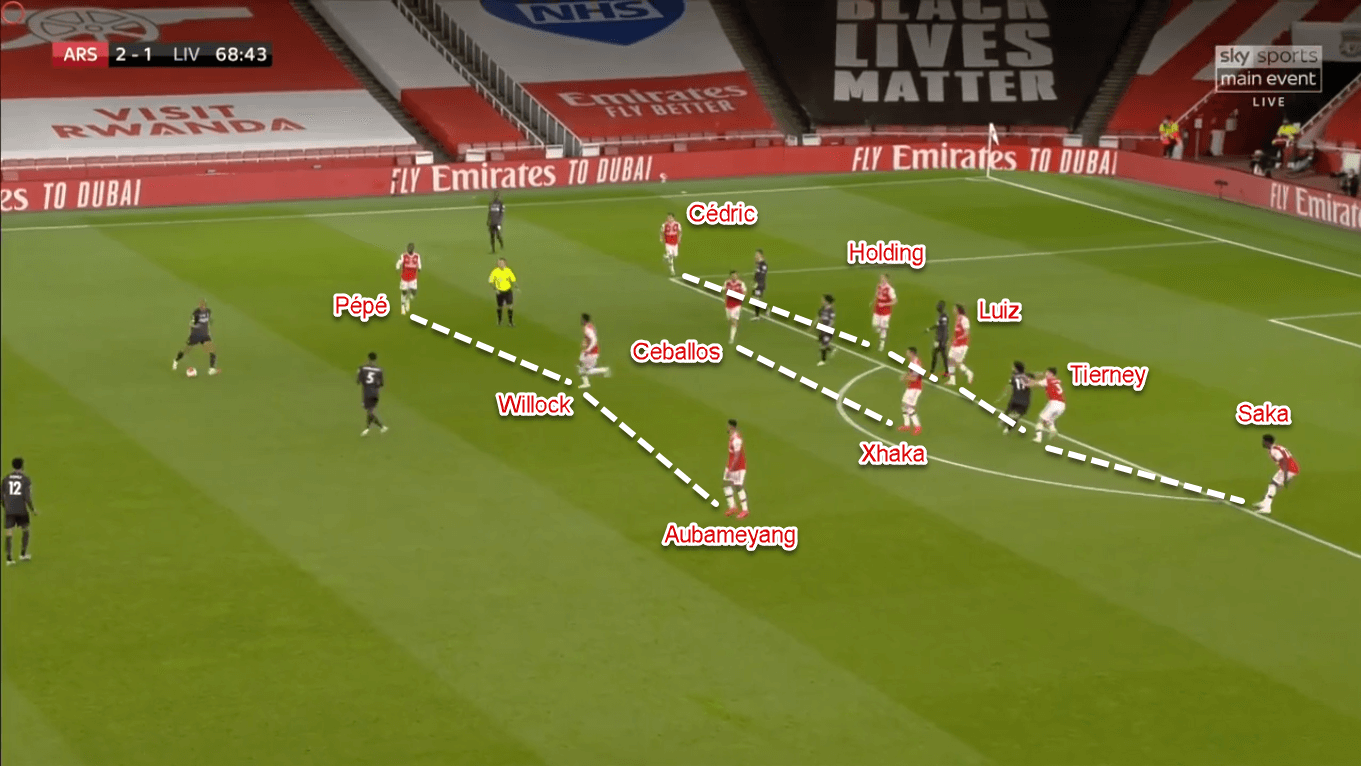
One of Liverpool’s approach in deploying crosses was by using an overload-and-switch to Alexander-Arnold. It means that Liverpool would try to overload the left flank before sending the ball diagonally to the young Englishman. The distributor could vary from one of the midfielders to Van Dijk, who finished the game with six (66.67%) completed long passes.
However, the practice wasn’t similar to Manchester City’s signature. In this process, Alexander-Arnold would start by standing deeper. Then, the passer would try to locate him with a diagonal ball in behind; sometimes even close to the corner post. The objective behind that was to disrupt the defensive line, as well as allowing the Englishman to deploy cut-back crosses.
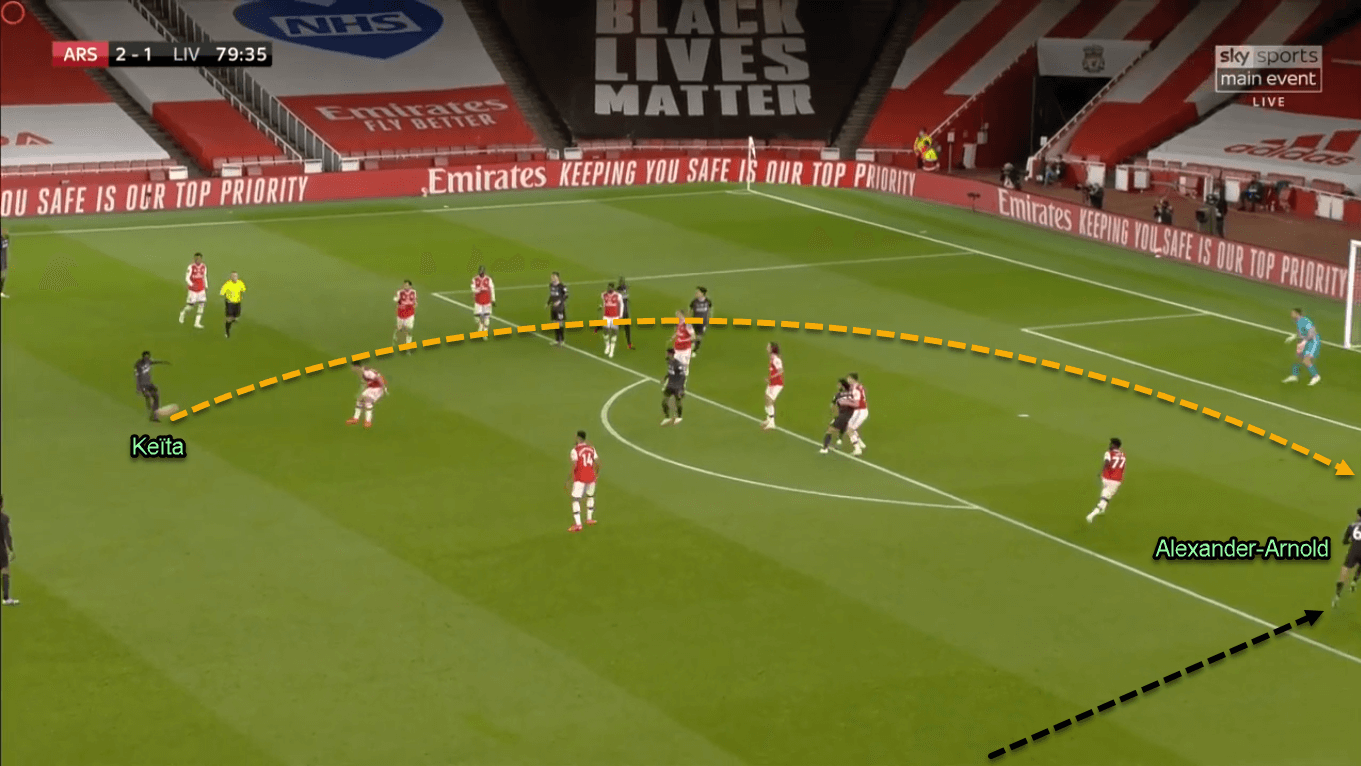
The wing-play almost bore its fruit early in the second half. That was Alexander-Arnold’s cut-back cross accurately found Salah, who was denied brilliantly by Martinez. However, probably that was the only highlight of Liverpool’s cross-heavy tactic. If we look at the statistics, Alexander-Arnold only completed two (28.57%) of his crosses. Liverpool’s total was not much better, with eight successful crosses from 25 attempts (32%).
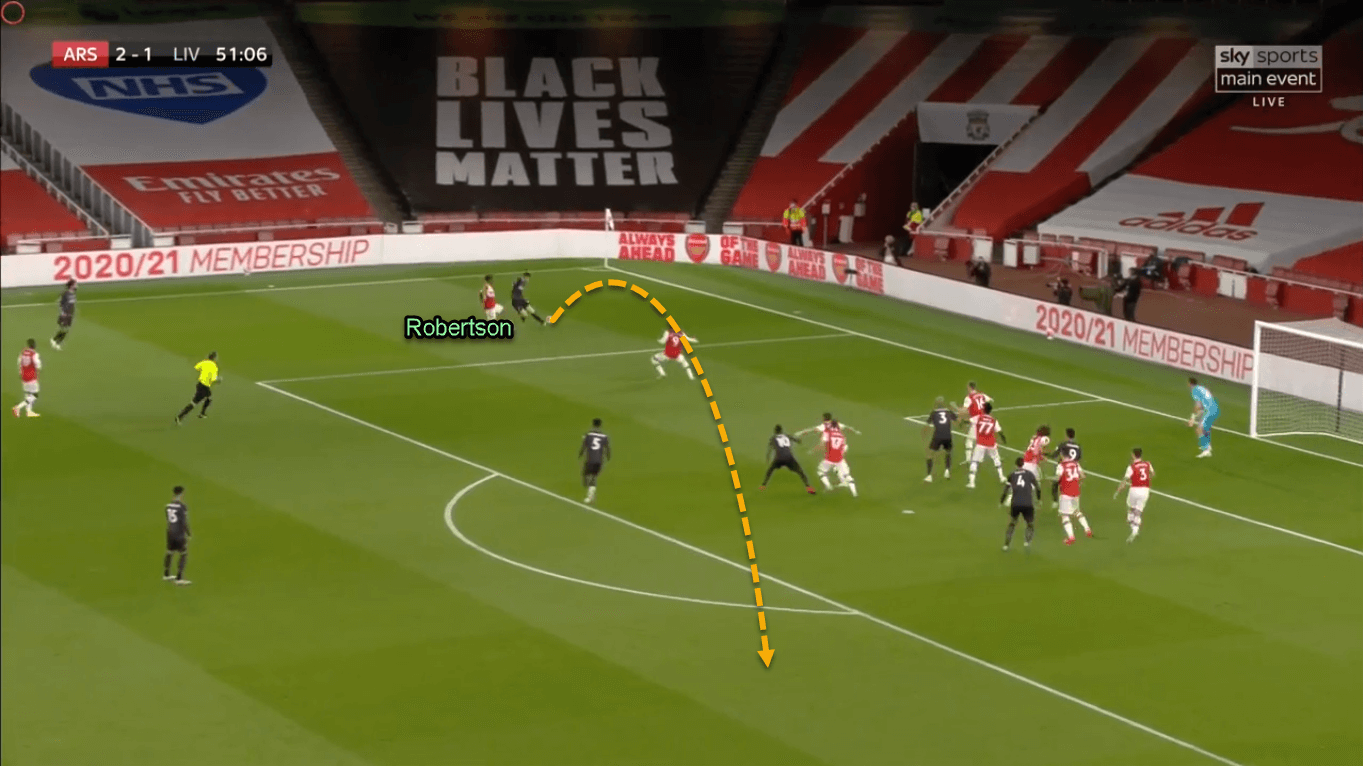
Conclusion
Arsenal ended the game with two goals from two shots on target. They even had a chance to add one more if only Willock didn’t miss his last-minute chance. Indeed Liverpool made costly errors and Arsenal were clinical, but lest we forget Arteta’s tactical brilliance throughout the game. His high-pressing scheme was the main reason behind that. His decision to opt for a safer approach could also be appreciated highly.
At the end of the day, this result ended Liverpool’s dream to break City’s 100-point record. This also marked their second defeat from five games in the last two weeks. Some may say that the Reds have started to allow the seeds of complacency to kick in. Some others argue Liverpool will easily recover to their top form in the next game.
So, what do you think: is this the start of the decline? Or, will Liverpool use those results to be much stronger than ever?




Comments